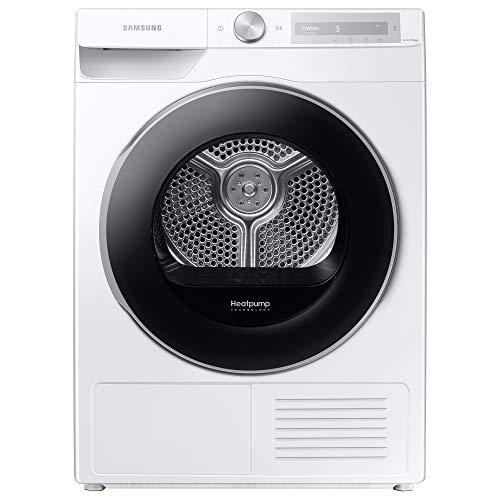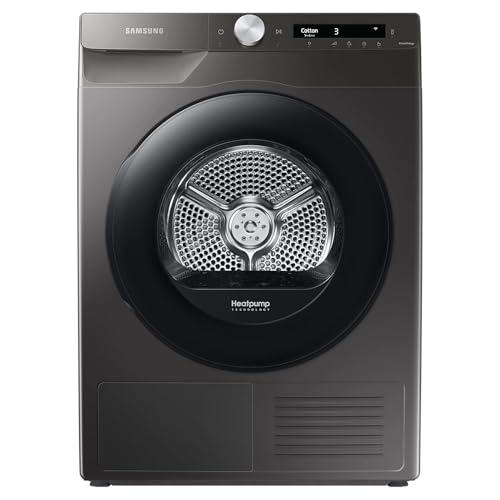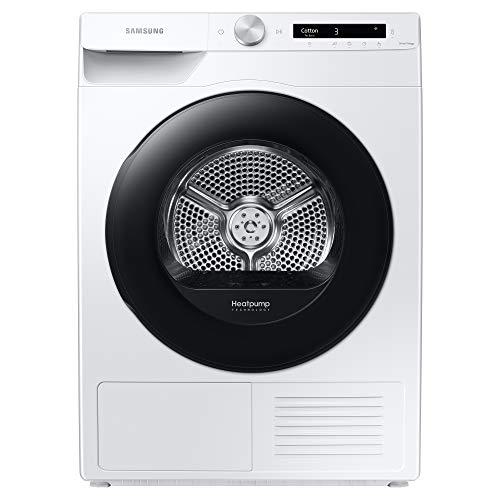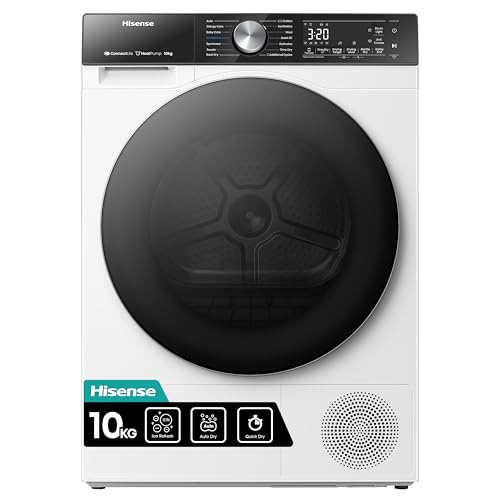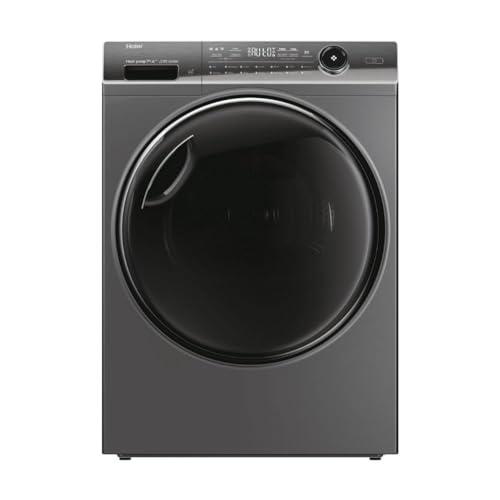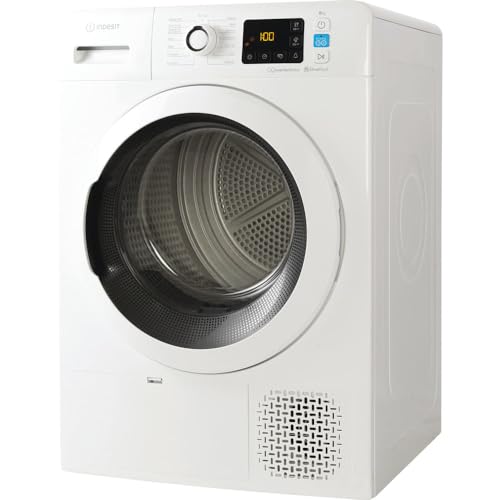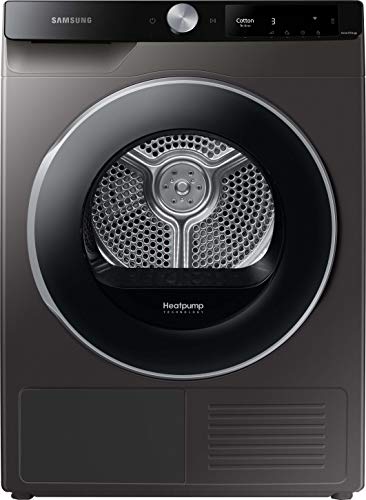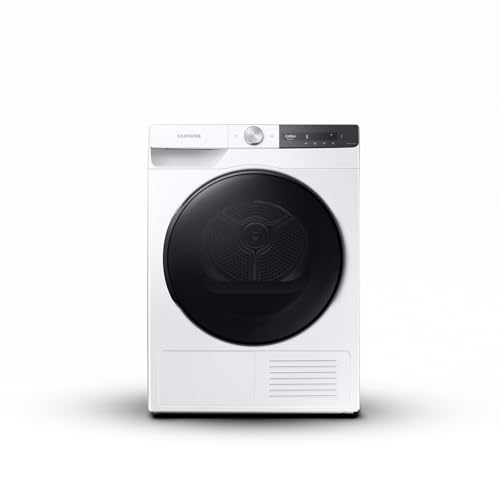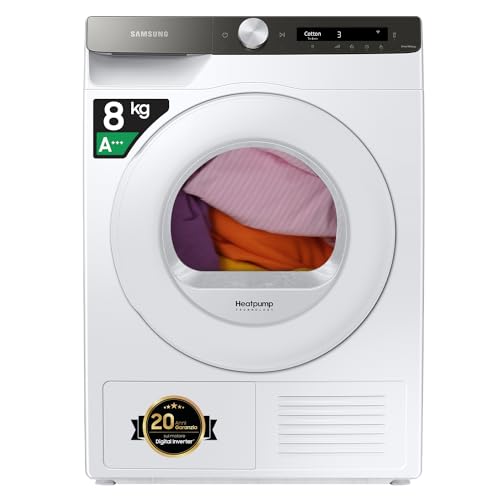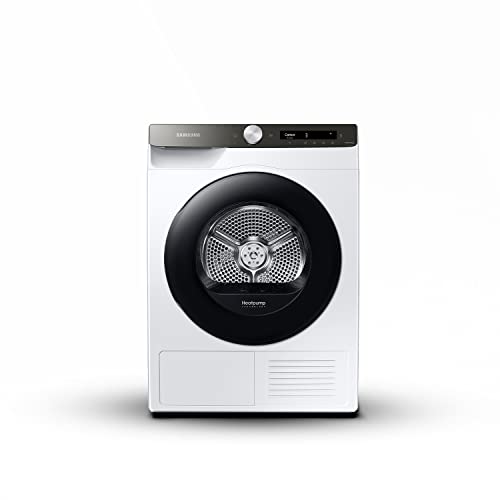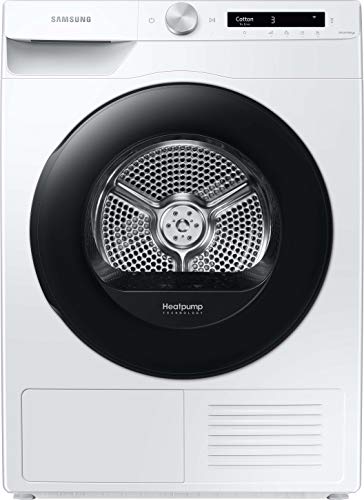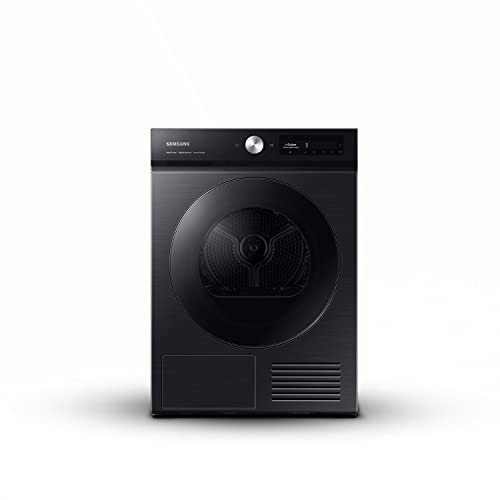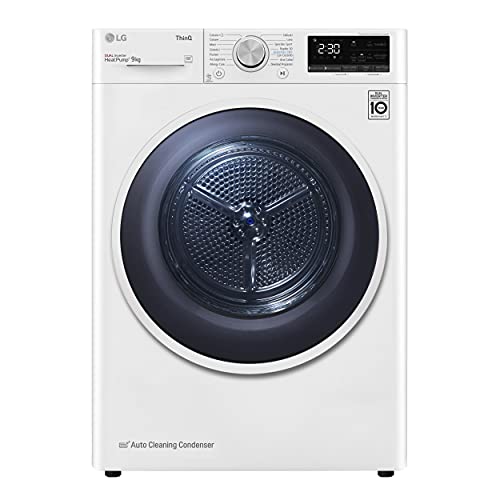What does it mean when a tumble dryer belongs to energy class A+++?
When a tumble dryer belongs to energy class A+++, it means the dryer is highly energy-efficient and consumes less energy than standard models. This classification appears on the energy label of every dryer, with ratings ranging from A+++ to D.
The distribution of energy classes across all tumble dryers on the market is as follows:
- A+++ class: 31%
- A++ class: 36%
- A+ class: 5%
- A class: <1%
- B class: 18%
- C class: 9%
- D class: <1%
The chart below illustrates the distribution of energy efficiency classes among tumble dryers based on their overall score.
[pie-chart-22520222510819767]
How are energy classes calculated?
Energy classes for tumble dryers are calculated using the specific energy consumption (SEC), which measures how much energy the dryer uses per kilogram of laundry. The formula is:
SEC = Total Energy Consumption (kWh) / Load capacity (kg)
To determine total energy consumption, the dryer is tested with a standard Cotton load at both full and partial capacities. The electricity used for a full drying cycle is recorded, and moisture levels before and after drying are measured to standardize efficiency.
The final SEC value includes adjustments for standby and off-mode power consumption to reflect real-world usage. Once calculated, the SEC is compared against predefined thresholds.
The following SEC thresholds determine the energy class:
- A+++ class: SEC ≤ 0.55 kWh/kg
- A++ class: 0.55 < SEC ≤ 0.64 kWh/kg
- A+ class: 0.64 < SEC ≤ 0.73 kWh/kg
- A class: 0.73 < SEC ≤ 0.87 kWh/kg
- B class: 0.87 < SEC ≤ 1.02 kWh/kg
- C class: 1.02 < SEC ≤ 1.28 kWh/kg
- D class: SEC > 1.28 kWh/kg
The best tumble dryers with energy class A+++ are as follows.
- Samsung DV90T6240LH Series 6 (Overall score: 8.9 points; capacity: 9 kg)
- Samsung DV90T5240AN Series 5+ (Overall score: 8.79 points; capacity: 9 kg)
- Samsung DV90T5240AW/S1 DV5000T (Overall score: 8.79 points; capacity: 9 kg)
Note: Products currently available are listed first.
How many kWh does a dryer with energy class A+++ consume?
A+++ tumble dryers consume between 1.25 kWh and 2.6 kWh per cycle, with an average of about 1.49 kWh per cycle.
Consumption varies by capacity: 7 kg dryers use about 1.26 kWh, 8 kg dryers use about 1.42 kWh, and 9 kg dryers use about 1.6 kWh. There is no strict formula between energy class and consumption because factors like capacity affect energy use.
When you compare this with other energy classes, A++ dryers use about 1.93 kWh per cycle (30% more than A+++), A+ dryers use about 2.25 kWh per cycle (50% more than A+++), and B class dryers use about 4.74 kWh per cycle (220% more than A+++).
The following chart displays the energy consumption per full load cycle for tumble dryers with an A+++ energy efficiency class.
[vertical-chart-49056650070629836]
Which are the most energy-efficient brands of dryers?
The tumble dryer brands with the lowest energy consumption are as follows.
- Samsung (Average consumption: 1.5 kWh per cycle at full load)
- Siemens (Average consumption: 1.5 kWh per cycle at full load)
- Smeg (Average consumption: 1.6 kWh per cycle at full load)
Are dryers with energy class A+++ better than those with other energy classes?
Dryers with energy class A+++ are on average better than those with lower energy classes. They have an average overall score of 7.7 points, higher than the market average of 7 points.
The following overall scores show how lower energy classes compare:
- A++ class: 7 points
- A+ class: 6.3 points
- B class: 6.1 points
- C class: 5 points
Tumble dryers with energy class A+++ also receive a high average user rating of 8.4 points.
The chart below ranks washing machine energy efficiency classes by their overall scores.
[horizontal-chart-45776148275128190]
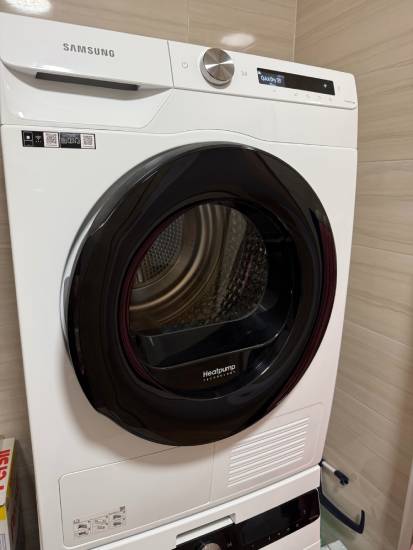
Are dryers with energy efficiency class A+++ more expensive?
Tumble dryers with energy efficiency class A+++ are more expensive than average dryers on the market. On average, they cost £150 more (£630 vs £480). For comparison, A++ dryers cost £490 (22% less), A+ dryers £440 (30% less), and B-class dryers £320 (50% less).
Energy-efficient dryers usually have a higher price because they include advanced features (i.e., inverter motor, laundry detection system) which reduce energy consumption. However, some lower-end models still achieve A+++ energy efficiency.
Higher energy efficiency can lead to savings over time. The average A+++ tumble dryer consumes 177 kWh annually, while a C-class dryer consumes 510 kWh. Over a lifespan of 12 years, this results in a total consumption of 2,124 kWh for A+++ and 6,120 kWh for C-class—a difference of 3,996 kWh. At £0.30 per kWh, this translates to £1,190 saved in energy costs.
If choosing between two similar dryers—one with A+++ and one with C-class—the A+++ model will save you more money in the long run.
The following chart highlights how prices vary among tumble dryers in different energy efficiency classes.
[horizontal-chart-38280340899925543]
Which type of tumble dryer is most energy efficient?
Heat pump tumble dryers are the most energy-efficient type on the market, significantly outperforming condenser and air-vented models.
All tumble dryers with energy class A+++ use heat pump technology. We did not find any condenser or air-vented dryer in this class.
The following energy classifications apply to heat pump dryers:
- 44% belong to energy class A+++
- 50% belong to energy class A++
- 6% belong to energy class A+
- None fall into class A or lower
In contrast, 95% of condenser dryers belong to energy class B, and only 4% reach class A++ or A+. No condenser dryer achieves A+++. Air-vented dryers are the least efficient, with most classified as energy class C.
Although heat pump dryers have the highest initial cost, they quickly compensate for it through lower energy consumption. They are the most cost-effective option for long-term use.
The chart below compares tumble dryers with different drying technologies based on their overall scores.
[horizontal-chart-40594742891326957]

Are dryers with energy class A+++ quieter than other dryers?
Tumble dryers with energy class A+++ are quieter than most other dryers. On average, they produce 64 dB of noise, while the market average is 65 dB.
Dryers with lower energy classes tend to be louder:
- A++ dryers have an average noise level of 65 dB.
- A+ and B-class dryers both average 67 dB.
This difference is likely due to A+++ dryers including advanced features (i.e., inverter motor) and higher overall build quality.
What influences the energy consumption of a dryer?
The energy consumption of a dryer depends on several factors:
- Type: Heat pump dryers use the least energy by recycling heat. Condenser dryers release heat into the room and consume more energy. Air-vented dryers use the most energy since they continuously draw and expel air.
- Drying programs: Energy use varies by program. Eco modes consume less energy by extending drying time, while Quick-dry modes use more energy for faster results.
- Load size: Overloading reduces drying efficiency and may require extra cycles, while underloading wastes energy.
- Moisture content: The wetter the clothes, the more energy needed. A high spin speed in your washing machine removes excess moisture and reduces drying time.
- Sensor drying: Dryers with moisture sensors stop automatically when clothes are dry, using less energy than timed drying.
- Ambient temperature: In colder environments, dryers—especially vented or condenser models—use more energy to maintain drying temperatures.
- Maintenance: A clean lint filter and well-maintained dryer improve performance and reduce energy consumption.
Which features have the greatest influence on the energy consumption of a dryer?
The following features have the greatest influence on a tumble dryer's energy consumption:
- Inverter motor (93% of A+++ dryers, 39% of all dryers): Inverter motors adjust speed and power consumption based on load size and drying conditions. This reduces energy waste compared to traditional motors, which run at a fixed speed.
- Humidity sensor (98% of A+++ dryers): Measures moisture levels in clothes and stops drying once optimal dryness is reached. This prevents overdrying, reducing unnecessary energy use.
- Selectable drying level (100% of A+++ dryers): Allows you to choose the exact dryness level (i.e., Iron Dry, Cupboard Dry). Lower settings use less energy by stopping sooner.
- Delay start option (100% of A+++ dryers): Lets you schedule drying during off-peak hours, optimizing electricity use and cost.
- Laundry detection system (50% of A+++ dryers): Detects load size and adjusts drying time accordingly. Smaller loads dry faster, saving energy.
- ECO function (33% of A+++ dryers, 13% of all dryers): Uses lower temperatures and extended drying times to consume less energy while still drying clothes effectively.
- ECO indicator (30% of A+++ dryers): Displays real-time energy consumption, helping you choose energy-efficient settings.
- Smart pairing (36% of A+++ dryers): Syncs with compatible tumble dryers to select optimal drying settings, preventing excessive energy use.
- Wi-Fi (41% of A+++ dryers, 26% of all dryers): While not directly reducing energy consumption, Wi-Fi connectivity enables smart scheduling, monitoring, and energy tracking for more efficient use.
- AI (16% of A+++ dryers, 6% of all dryers): Uses machine learning to analyze usage patterns and optimize drying settings for lower energy consumption.
Tumble dryers with more of these features tend to be more energy-efficient.
Additionally, 100% of A+++ dryers have a special filter type that simplifies cleaning. A clean filter improves airflow, enhancing performance and reducing energy consumption.
Other features common in A+++ dryers, though not directly affecting energy efficiency, include:
- Smart diagnosis (34%): Identifies issues early, preventing inefficiencies.
- Memory function (40%): Saves preferred drying settings for convenience.
Consider which features you need when selecting a dryer. You can filter models based on these features on our website.

Are dryers with multiple wash drying more energy efficient?
The number of drying programs does not directly affect a tumble dryer's energy efficiency. However, having more programs gives you better control over drying settings, helping you select the most energy-efficient option for each load.
Selecting Eco cycles—such as Eco Cotton in Hoover, Electrolux, Candy, and Bosch dryers—reduces energy consumption by optimizing drying time and temperature. Some advanced models, like LG dryers with the Eco Hybrid function, can reduce energy use by up to 21%.
Using the gentle drying function (available in 51% of tumble dryers) can also improve efficiency. This feature lowers drying temperatures to 50-60°C and extends cycle duration. A longer drying time at a lower heat setting consumes less energy compared to shorter, high-temperature cycles.
The number of drying programs available in tumble dryers with an A+++ energy efficiency class is shown in the following chart.
[vertical-chart-31170232250124501]
What are the most common programs in energy class A+++ dryers?
All A+++ energy class tumble dryers include basic drying programs such as Cottons, Synthetics, Mix, and Wool. Many also feature specialized programs, with the following being the most common:
- Outdoor/Sport cycle (87%): Designed for waterproof and sportswear fabrics, maintaining breathability while drying.
- Shirt cycle (72%): Reduces wrinkles and drying time for shirts, making ironing easier.
- Jeans cycle (36%): Optimized for thick denim, ensuring even drying without overheating.
- Duvet cycle (64%): Handles bulky items like duvets and pillows, preventing uneven drying.
- Hygiene cycle (54%): Uses high temperatures to remove bacteria and allergens.
- Allergy cycle (31%): Similar to the Hygiene cycle but specifically designed to reduce allergens in fabrics.
- Refresh cycle (77%): Freshens clothes with air circulation, removing odors without washing.
- Baby-care cycle (20%): Uses gentle drying to protect delicate baby clothes and fabrics.
A+++ tumble dryers typically have 10 to 22 drying programs, with an average of 14, similar to dryers of other energy classes.
Are tumble dryers with bigger capacities more energy efficient?
Tumble dryers with larger capacities tend to be more energy efficient in terms of kWh per kilogram. For example, 51% of 9 kg dryers have an A+++ rating, compared to 33% of 8 kg dryers and only 6% of 7 kg dryers.
There is no strong correlation between capacity and absolute energy consumption. While larger dryers might seem to consume more energy, data does not support this assumption. The average energy consumption per cycle for different capacities is:
- 7 kg: 2.25 kWh
- 8 kg: 1.87 kWh
- 9 kg: 1.89 kWh
- 10 kg: 4.1 kWh
Tumble dryers with 8 and 9 kg capacities consume the least energy on average. Energy consumption decreases up to 8-9 kg, then increases again for larger capacities. This is because 8 and 9 kg dryers incorporate advanced energy-saving technologies (i.e., better load sensing, more efficient motors) but do not handle excessively large loads, which require more energy input.
The most common A+++ dryers are 9 kg models (47%) and 8 kg models (45%).
To maximize efficiency, dry full or nearly full loads. Overloading reduces airflow and may require repeated cycles, while underloading wastes energy.
The capacity distribution for tumble dryers with an A+++ energy efficiency class is presented in the chart below.
[pie-chart-19081519619517571]
The best 7 kg tumble dryers with energy class A+++ are as follows.
- Beko DS7512PA (Overall score: 7.73 points, capacity: 7 kg)
- Beko DRXS737AI (Overall score: 7.6 points, capacity: 7 kg)
The following tumble dryers are the best 8 kg models with energy class A+++.
- Indesit YTN M11 83K RX (Overall score: 7.49 points, capacity: 8 kg)
- Samsung DV80T6220LX/S2 Series 6 (Overall score: 8.84 points, capacity: 8 kg)
Note: Products currently available are listed first.
Are there any slim dryers with energy class A+++?
There are no A+++ energy class slim tumble dryers available. The depth of A+++ dryers ranges from 54 to 69 cm, meaning all models are full-sized.
If you need a slim tumble dryer, check models with A++ or A+ energy class. We have found some in these categories that are still highly energy-efficient.

